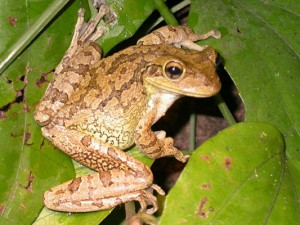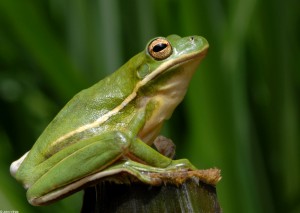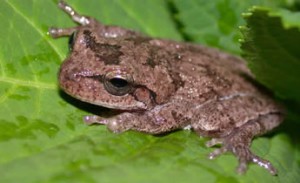An invasive species can create havoc in an environment and are one of the leading threats to native wildlife. They grow and reproduce quickly and often negatively impact the ecosystem through direct threats such as predation, out-competing native species for food, preventing native species from reproducing, and causing diseases. However, invasive species can also cause harm in a more indirect way: competing with natives for acoustic space.
Acoustic space is a limited resource. Sounds that overlap calling species can obstruct the animals’ vocal signals and therefore compromise the animals’ ability to communicate vocally. When an invasive species is introduced into an ecosystem, they become a source of noise as they produce signals to attract mates and defend territories. Previous studies have shown that animals can modify and adjust their vocal as the result of increased anthropogenic noise such as traffic and construction. Now the question is, can the noise made by invasive species cause similar acoustic adjustments by native species?

Cuban Treefrog (Ostenpilus septentrionalis) http://www.theradzoo.com/images/Animals/CubanTreeFrog.jpg
A study by Jennifer Tennessen et al. investigated the effect novel sound produced by an invasive Cuban treefrog, Ostenpilus septentrionalis, on native treefrog calls. They predicted that novel sounds created by the invasive treefrog would cause native treefrogs whose calls are similar to those of O. septentrionalis, to vocally modify their calls to minimize acoustic competition, but would have no effect on native treefrogs with acoustically different calls.
The researchers conducted a field playback experiment with two native species, one whose breeding calls are similar in structure and frequency to the invasive Cuban treefrog (green treefrogs, Hyla cinerea), and one whose breeding calls are not (pine woods treefrogs,, Hyla femoralis). They found that the green treefrogs modified their calls in response to playback of Cuban treefrog calls, but pine woods treefrogs did not. The green treefrogs shortened their calls and made them louder and more frequently in the presence of the Cuban treefrog noise.

Green treefrog (Hyla cinerea) http://www.virginiaherpetologicalsociety.com/amphibians/frogsandtoads/green-treefrog/Green%20Treefrog%20(Hyla%20cinerea)036.JPG
The results demonstrate that the invasive treefrogs compete for acoustic space with native treefrogs with similar calls and as a result, native treefrogs modify their calls to minimize acoustic interference and maximize the strength of their vocal signal. However, there may be costs to altering their calls as call duration may be an indicator of heritable male genetic quality. Thus, the shorter modified calls could affect their mating success. To investigate if the benefits outweigh the costs, further studies need to be done on the effects of call modification as a result of acoustic competition from invasive species.
All in all, this study demonstrates that competing for acoustic space is yet another way invasive species are driving behavioural changes and altering native communities. It reveals an additional source of environmental noise that obstructs acoustic communication and increase pressure on native species.
References
Tennessen, J. B., Parks, S. E., Tennessen, T. P., Langkidle, T. (2016) Raising a racket: invasive species compete acoustically with native treefrogs. Animal Behav 114, 53-61

